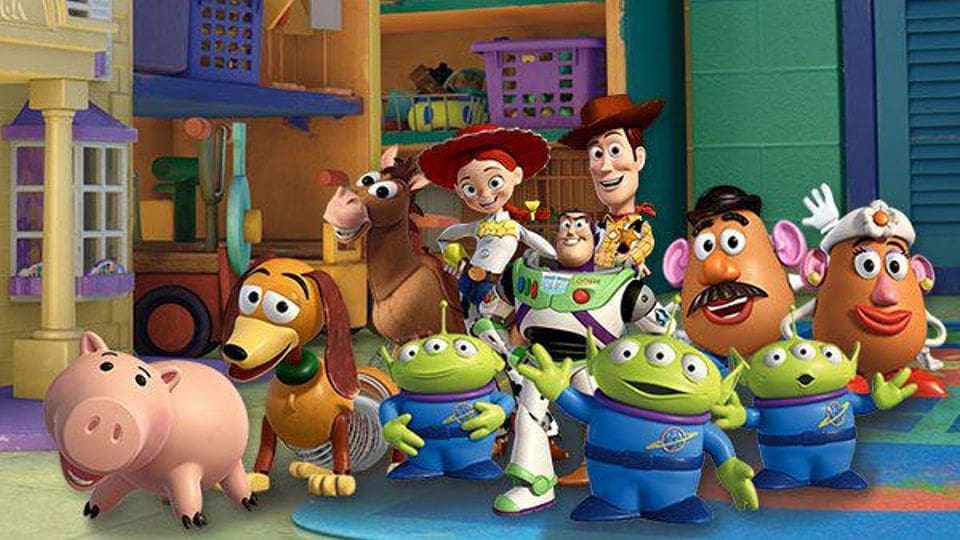Debian is one of the most versatile Linux distributions as the functionality and services are unmatched. It is one of the most stable distros of Linux, supported by a large community, open-source and 100% free, supports several computer architectures, and is ideal for Desktops and Servers.
If you have been confused about various releases of Debian versions over the years and want to clarify how and when different versions were released, then you have come to the right place. This article will explain the release pattern and the order of release of the major Debian versions.
The naming convention of Debian releases

Toy Story Characters
All the releases of Debian have been named after different characters of Pixar’s animated movie Toy Story. This is because the project leader of the first stable Debian release, Bruce Perens, was also working at Pixar at the time. After the first stable version, Debian 1.1 (Buzz), which was named after the character “Buzz Lightyear,” was released, all the consecutive releases were also named after other characters of Toy Story to keep the same formula of naming.
What are the different types of Debian releases?
Three different types of Debian releases are in active maintenance by the support community at any given time. These are as follows
1. Stable
This is the latest officially released version of Debian at any given time. As the name suggests, it is the most stable of the three, and also the main version used by the consumers and is actively supported by the community. The most recent stable version is Debian version 11, also codenamed “Bullseye.”
Apart from the current stable version release of Debian, the previous two releases are also under the LTS (Long Term Support) by the support team and are named as “oldstable” and “oldoldstable” releases, respectively. The version before those two is also supported under extended LTS and is called “archived.”
2. Testing
This version of Debian is used to test various new features that the users want in the future releases of Debian and are yet to be released. Once these features become stable enough, then they are ported over to the “stable” release of Debian in an update, or they are included in the next major release of Debian, whichever seems appropriate at the time. The current “testing” distribution is called “Bookworm.”
3. Unstable
This is a version of Debian, which Developers mainly use to do active development of Debian. Many new features are under continued work, and some are not even thoroughly developed. Some tools even crash while running, so basically, the “unstable” version is a testing environment. The “unstable” version is always called “sid.”
Debian release history
Here is a comprehensive list of every major Debian release with the names and release dates.
| Name | Release date | Toy Story Character | Version |
|---|---|---|---|
| Debian 1.1 (Buzz) | June 17, 1996 | Buzz Lightyear | obsolete stable release |
| Debian 1.2 (Rex) | December 12, 1996 | Rex (the T-Rex) | obsolete stable release |
| Debian 1.3 (Bo) | June 05, 1997 | Bo Peep | obsolete stable release |
| Debian 2.0 (Hamm) | July 24, 1998 | Hamm (the pig) | obsolete stable release |
| Debian 2.1 (Slink) | March 09, 1999 | Slinky Dog | obsolete stable release |
| Debian 2.2 (Potato) | August 15, 2000 | Mr. Potato Head | obsolete stable release |
| Debian 3.0 (Woody) | July 19, 2002 | Woody the cowboy | obsolete stable release |
| Debian 3.1 (Sarge) | June 06, 2005 | Sergeant from the Bucket of Soldiers | obsolete stable release |
| Debian 4.0 (Etch) | April 08, 2007 | Etch, the Etch-A-Sketch | obsolete stable release |
| Debian 5.0 (Lenny) | February 14, 2009 | Lenny, the binoculars | obsolete stable release |
| Debian 6.0 (Squeeze) | February 06, 2011 | Squeeze, toy aliens | obsolete stable release |
| Debian 7 (Wheezy) | May 04, 2013 | Wheezy the penguin | obsolete stable release |
| Debian 8 (Jessie) | April 26, 2015 | Jessie the cowgirl | archived release under extended LTS |
| Debian 9 (Stretch) | June 17, 2017 | Rubber octopus from Toy Story 3 | "oldoldstable" release under LTS |
| Debian 10 (Buster) | July 06, 2019 | Andy's pet dog | "oldstable" release under LTS |
| Debian 11 (Bullseye) | August 14, 2021 | Woody's horse | current stable release |
| Debian 12 (Bookworm) | TBA | Bookworm | unstable release |
| Sid | This version is only for testing | The next-door neighbor of Andy | testing |
What is the best Debian release?
The best Debian release is easily the most recent one as it is the most updated and the most secure version of all the Debian releases. The latest stable Debian release, version 11 codenamed “Bullseye,” boasts many updated features that were missing or outdated in the previous versions. Bullseye is compatible with many more software and packages than the earlier version Debian 10 “Buster.”
At the time of release, Bullseye supported more than 11294 new packages as compared to its predecessor, and over 42821 software packages were updated with the release. If you would like to take a comprehensive look into this and read which packages got updated with the release, you can check out the official release notes on the official Debian website.
Apart from the updated packages, the latest Debian release also came with much-needed updates to the built-in drivers and other vital features. Some of those are as follows:
- Driverless scanning with SANE
- Updated driverless printing with CUPS
- New generic open command
- Control groups v2 provide a unified resource-control hierarchy.
- Persistent systemd journal, which is activated by default
- New Fcitx 5 input method which supports Wayland and has better add-on integration
- Kernel support for exFAT
- Improved man page translations
- Improved support for alternative init systems
Noteworthy highlights from some recent previous Debian releases
Although the latest Debian release is also the best and most recommended version by the support community, it is essential to remember that every previous Debian release came with much-needed updates at the time of their release. Here are some noteworthy features released alongside the last three major Debian releases.
Debian 10 “Buster”
Debian 10 came with 13370 new packages, and over 35532 software packages were updated with the release of this version. Productivity applications like LibreOffice, Calligra and, GNUcash were updated. This was the first Debian version to come with Rust-based programs and a mandatory access control framework. Debian 10 also came with the support for UEFI secure boot that prevents loading unsigned code. Click here for a detailed look into the release notes of Debian 10.
Debian 9 “Stretch”
Debian 9 came with 15346 new packages and over 29859 updated software packages. Productivity applications, including the office suites, were updated, and desktop applications were upgraded to Evolution 3.22. In Stretch, the vast majority of all executables support ASLR. It also came with improvements to the APT package manager and archive layouts. MySQL was replaced with MariaDB in Stretch by default. For a detailed look into the release notes of Debian 9, click here.
Debian 8 “Jessie”
Debian 8 supported two new computer architectures while also supporting the other architectures that the previous versions supported. These new architectures were “arm64” and “ppc64el”. The distribution also included more than 12253 new packages and updates to more than 24573 software packages. Productivity applications like the office suites were upgraded, and so were the other desktop applications, including the upgrade to Evolution 3.12. GNOME desktop environment was upgraded to version 3.14 with many new improvements and came with much-needed features like fully integrated support for touch screens, geolocation, and much more. For a detailed look into the release notes of Debian 9, click here.
What’s planned for the future?
As soon as the current stable version of Debian (Bullseye) was released on August 14, 2021, the next Debian version codenamed “Bookworm” became the official “testing” version of Debian. It is now under development as the next major Debian release. Users can also download and install the “testing” version on their computers, but it is not recommended due to the missing features and its instability. This is how the lifecycle of every major Debian release works.
The “unstable” version, which is always Sid, becomes the “testing” version. Once the “testing” version fulfills a certain amount of requirements set by the support community, it becomes the newly released “stable” version. And whenever that happens next, we will be sure to keep you updated so you are already in the right place.
We hope this article has given you a detailed outlook for all the previous Debian releases. If you still have any questions, do let us know in the comments below.

